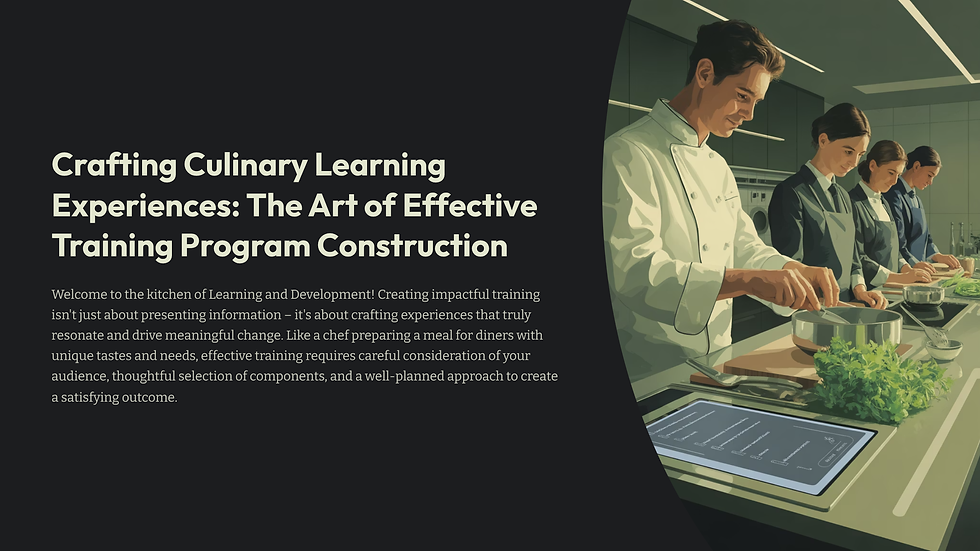MG FITNESS
PERSONAL
TRAINER
Train the Trainer
Fundamentals of Learning & Development
This section explores the core principles and practical skills essential for successful training delivery. It moves beyond simple instruction to focus on the strategic components of adult education, ensuring trainers can create an environment that not only teaches but also inspires.
1. Welcome
2. Elements of Effective Training
This covers the key components that make a training session successful, including a clear purpose, a structured delivery method, and engaging content.
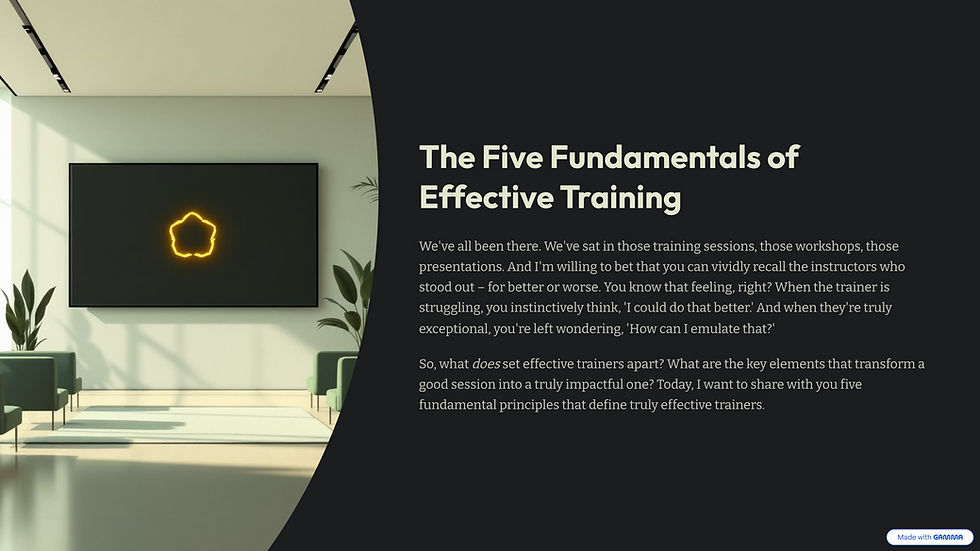



3. Types of Training Occurrences
This subject explains various formats for training, from live classroom sessions to webinars and self-paced e-learning modules.


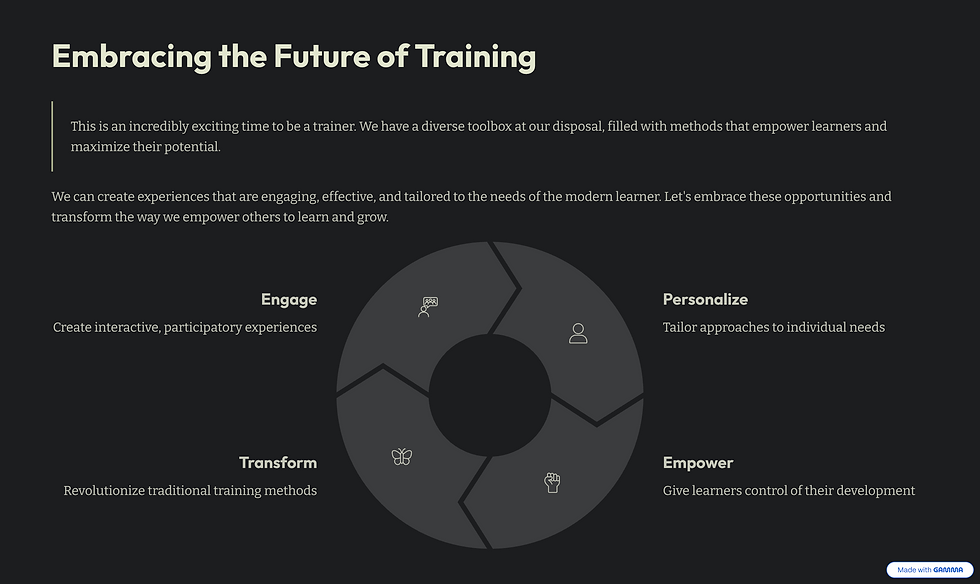

4. Core Competencies of Effective Trainers
This focuses on the essential skills that make a great trainer, such as communication, empathy, and adaptability.
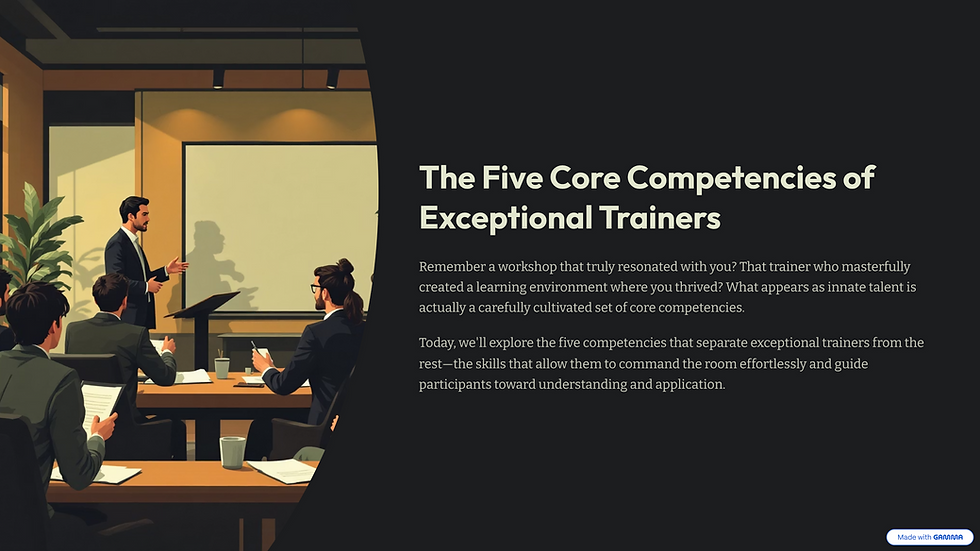



5. Framing Effective Learning Environments
This explores how to create a physical or virtual space that is conducive to learning and encourages participant interaction.


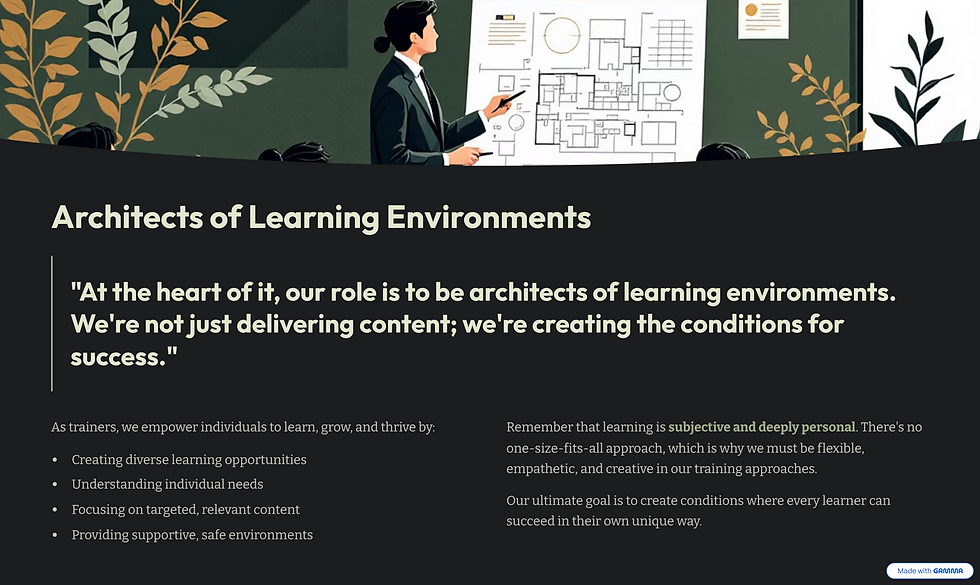

6. Revisiting Adult Learning Principles
This reviews foundational principles of how adults learn, emphasizing their need for relevance, autonomy, and practical application.
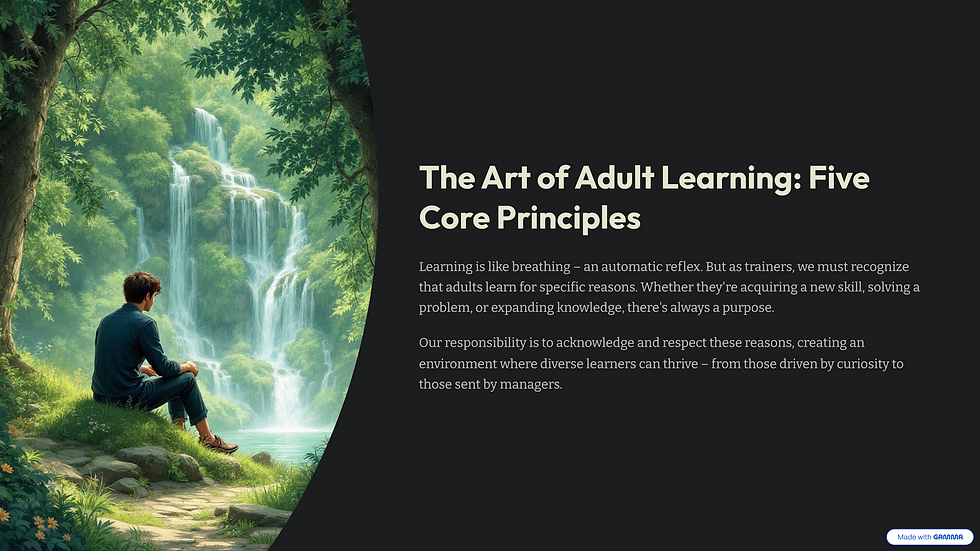
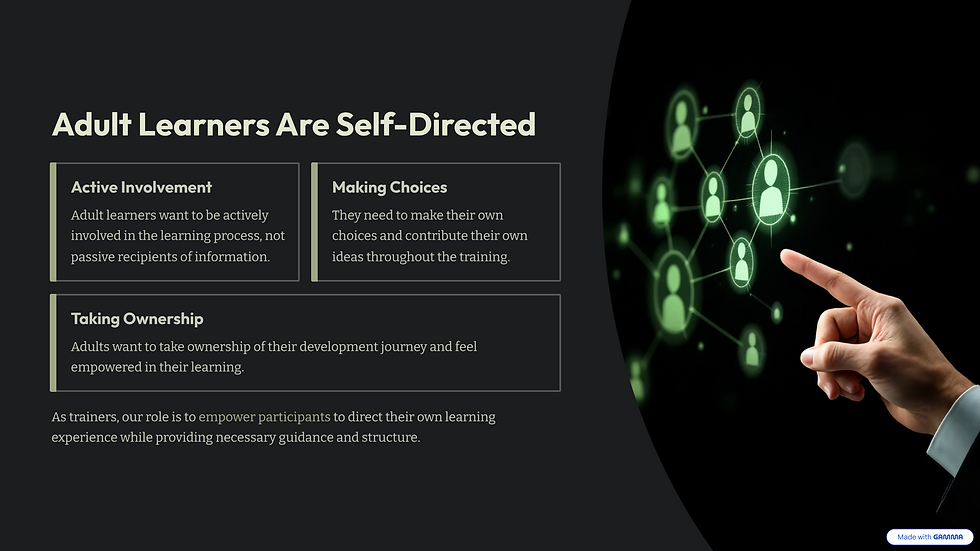
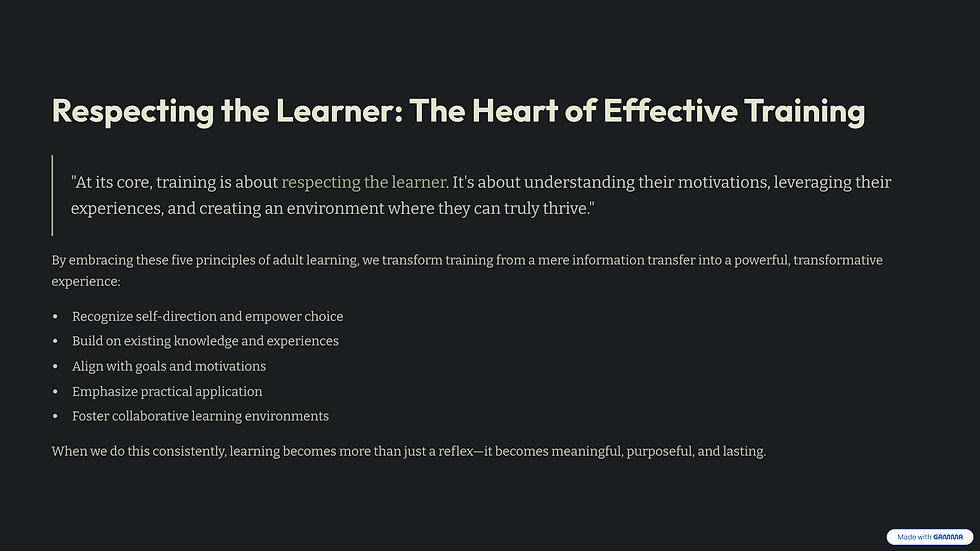

7. Effective Learning Approaches
This covers various instructional strategies, such as problem-based learning and case studies, to cater to different learning styles.




8. Learning Assumptions
This addresses common beliefs and misconceptions about how people learn, helping trainers better understand their audience.
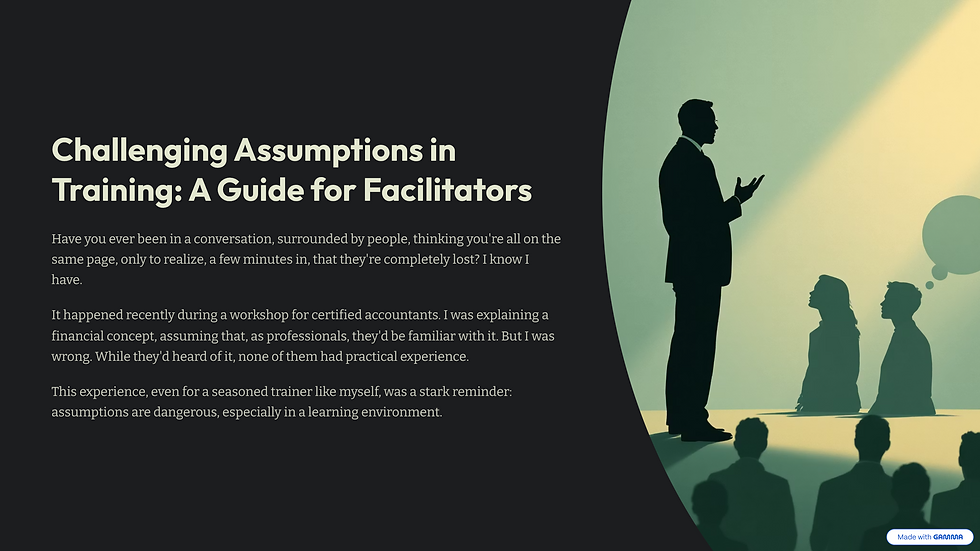

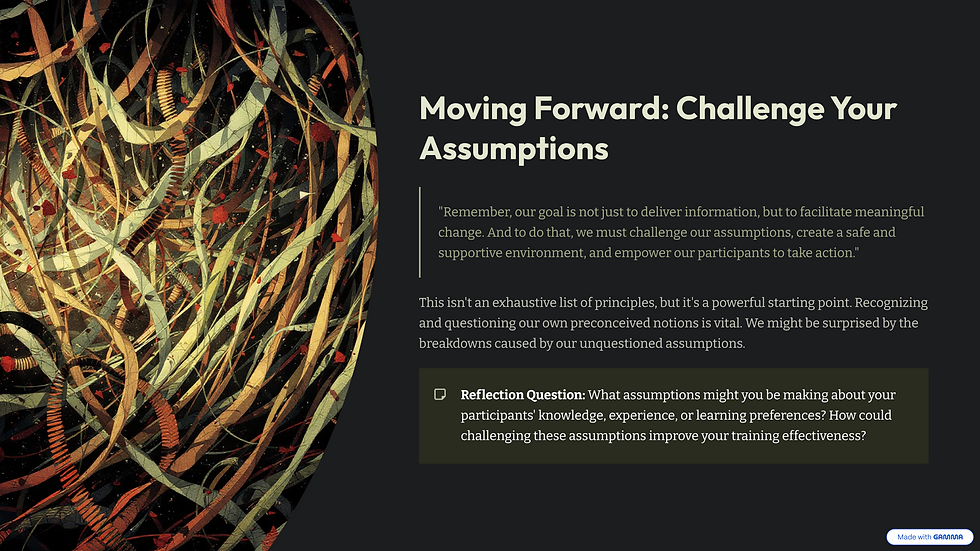

9. Motivating Adult Learners
This focuses on techniques to engage and motivate participants by appealing to their intrinsic interests and professional goals.
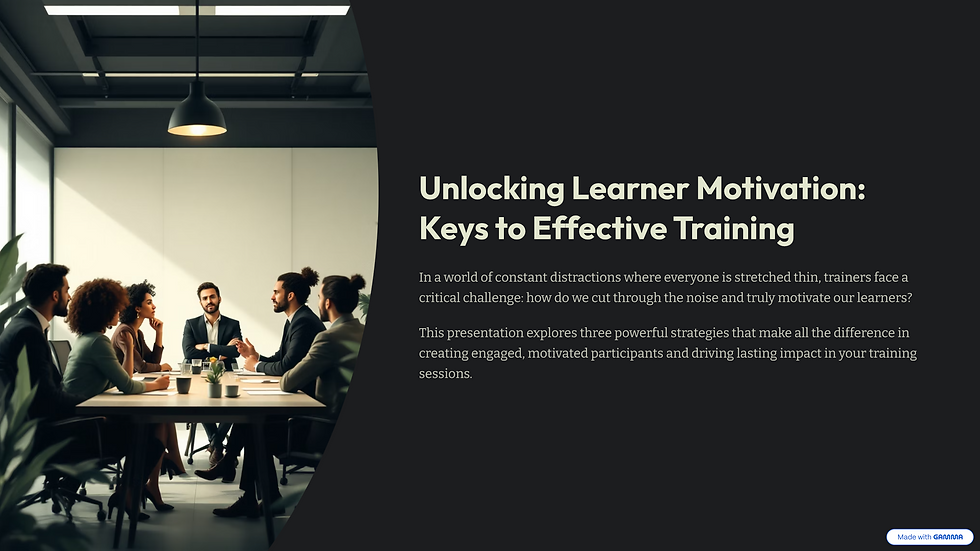



10. Developing a Learning Objective
This teaches how to write clear, measurable learning objectives that define what participants should know or be able to do by the end of the session.




11. Creating a Session Plan
This guides participants through the process of structuring a training session, including timing, activities, and transitions.
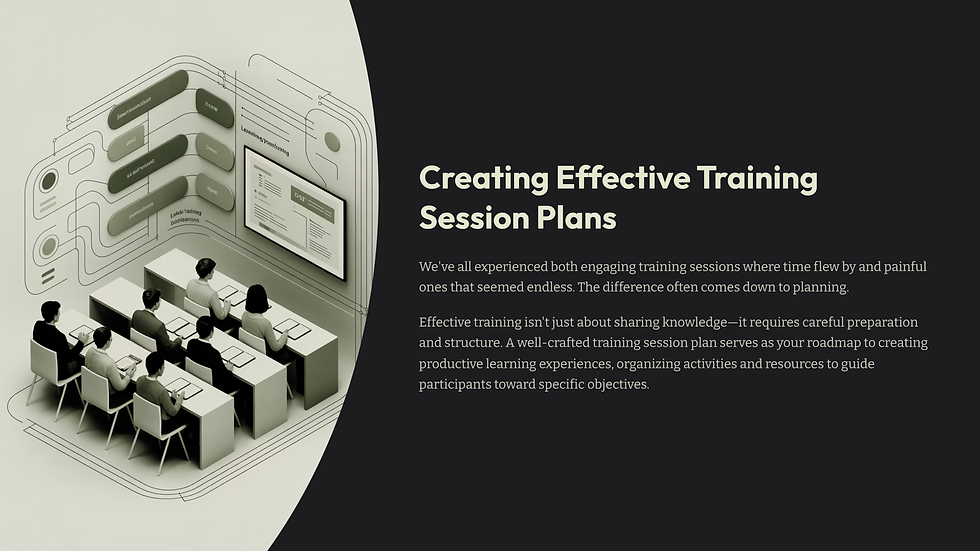

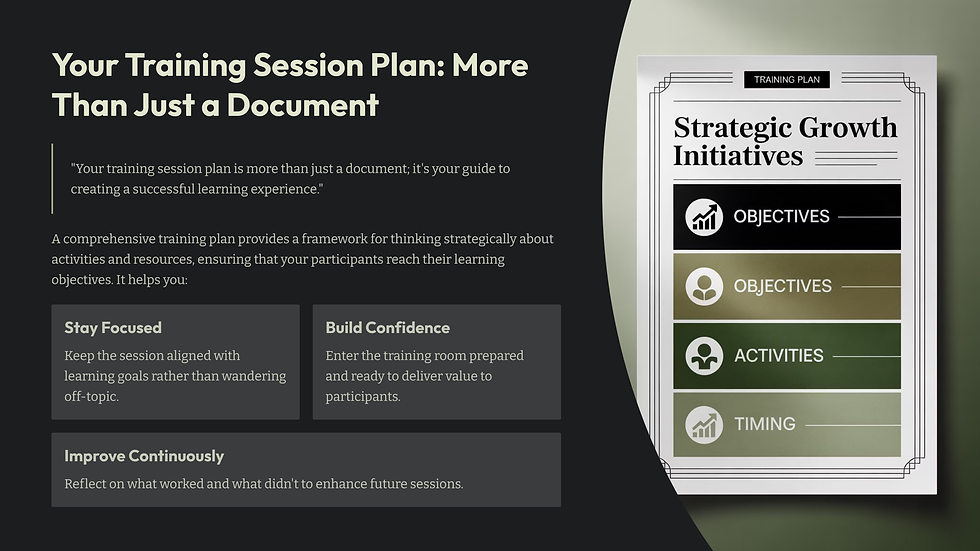

12. Organizing and Structuring the Content
This covers best practices for logically arranging information to ensure it is easy for learners to follow and retain.




13. Preparing to Engage Participants
This focuses on strategies for building rapport and encouraging active participation from the beginning of the training session.
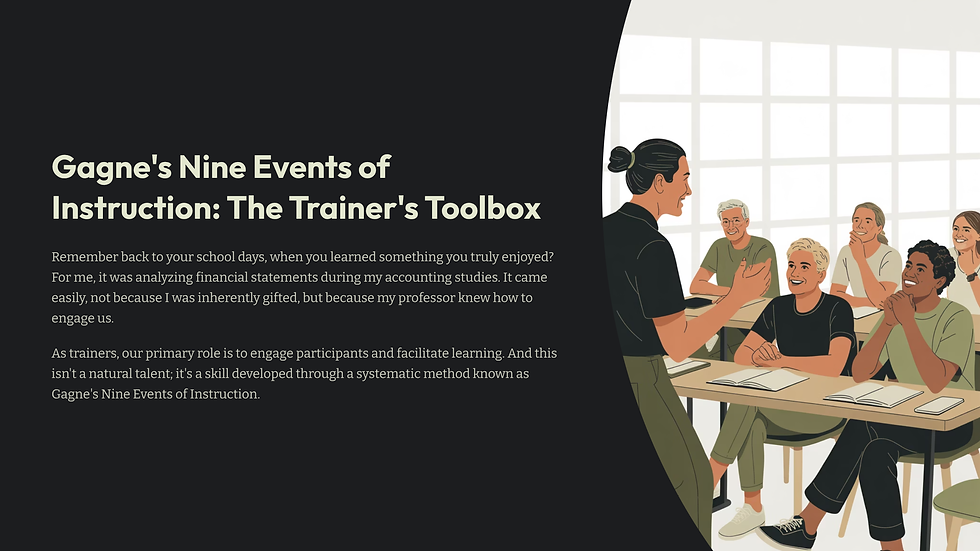



14. Developing Proper Communication Skills
This teaches how to use clear and concise language, active listening, and body language to enhance training delivery.
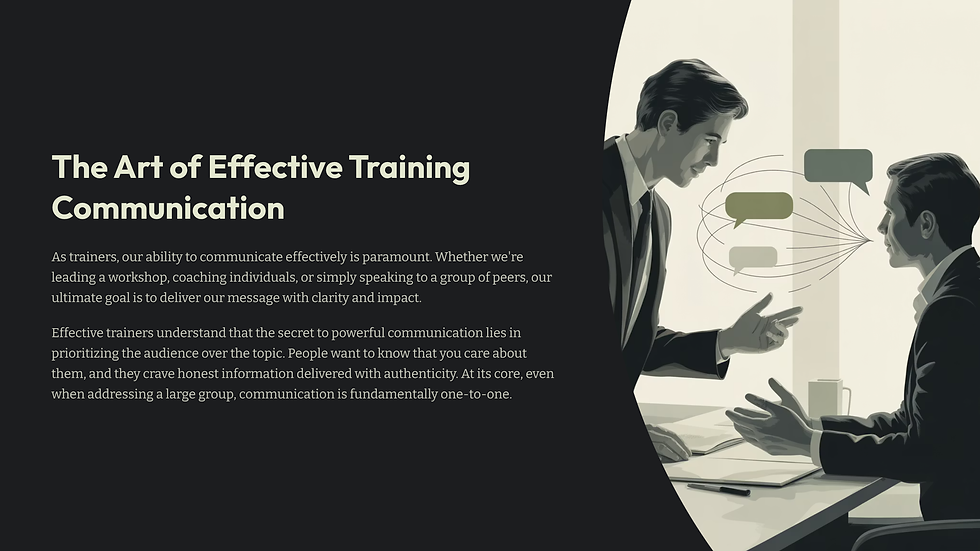



15. Interpreting Non-Verbal Cues
This subject helps trainers read and respond to body language from participants to gauge understanding and engagement.




16. Creating a Learning Culture
This explores how to foster an environment where continuous learning and collaboration are valued and encouraged.


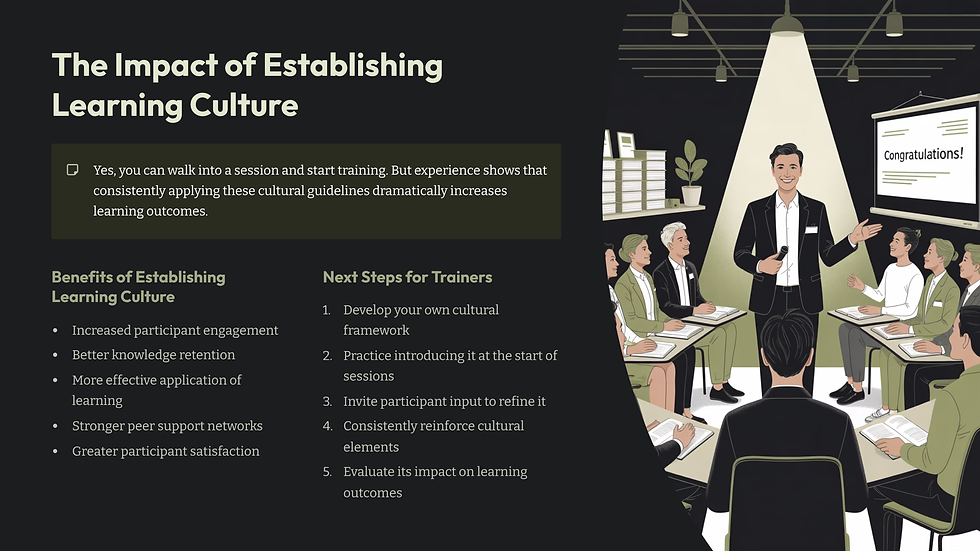

17. Questioning for Effective Learning
This covers techniques for asking questions that promote critical thinking and discussion, rather than just simple recall.


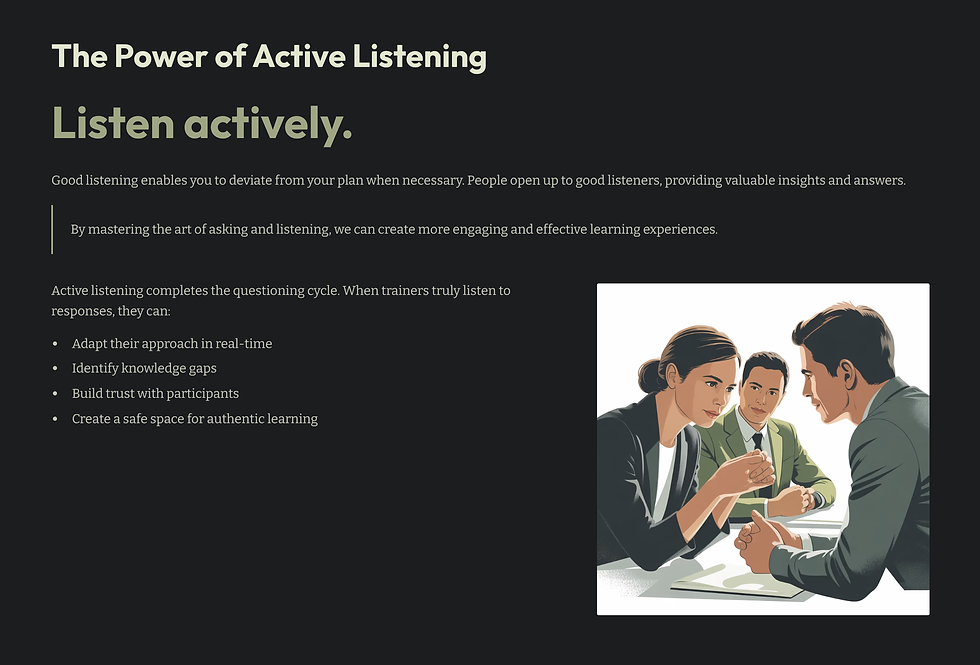

18. Managing Challengers and Interrupters
This provides strategies for handling difficult participants or unexpected disruptions in a professional and productive manner.




19. Assessing Learning Performance
This explains how to measure whether participants have met the learning objectives through quizzes, activities, or observations.
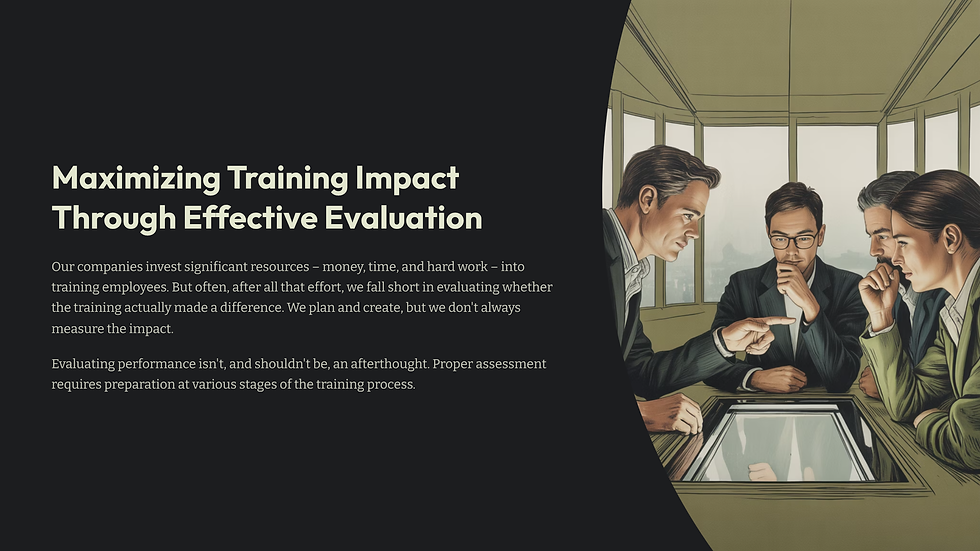



20. Providing Feedback
This focuses on how to give constructive, actionable feedback that helps participants improve without discouraging them.




21. Getting Participants Involved
This offers a variety of techniques to encourage active participation, from group discussions to hands-on exercises.


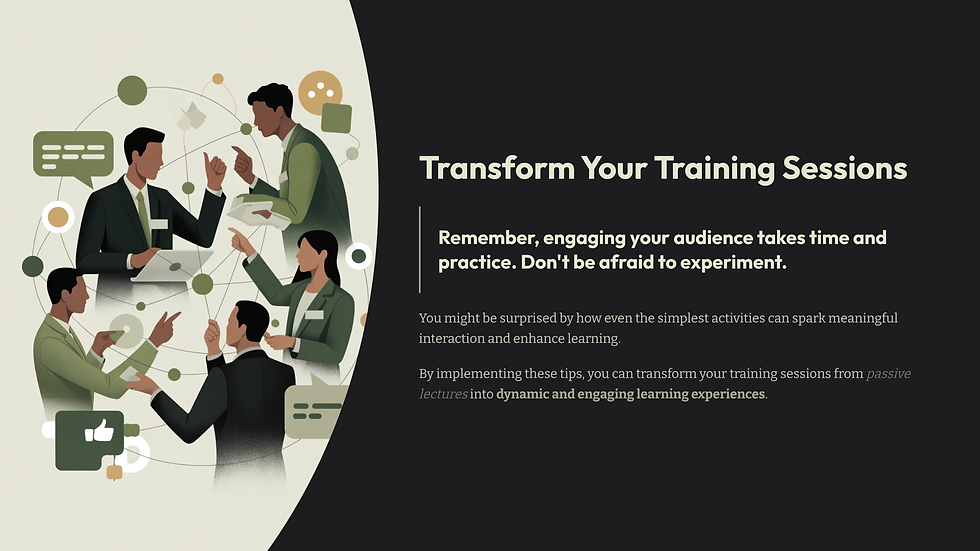

Styles of Learners
This section is dedicated to understanding the different ways people process information. By recognizing and catering to various learning styles, trainers can create more inclusive and effective educational experiences for all participants.
1. Seeing to Understand: Engaging the Visual Learner
This covers methods to appeal to those who learn best by seeing things, such as using slides, diagrams, and videos.

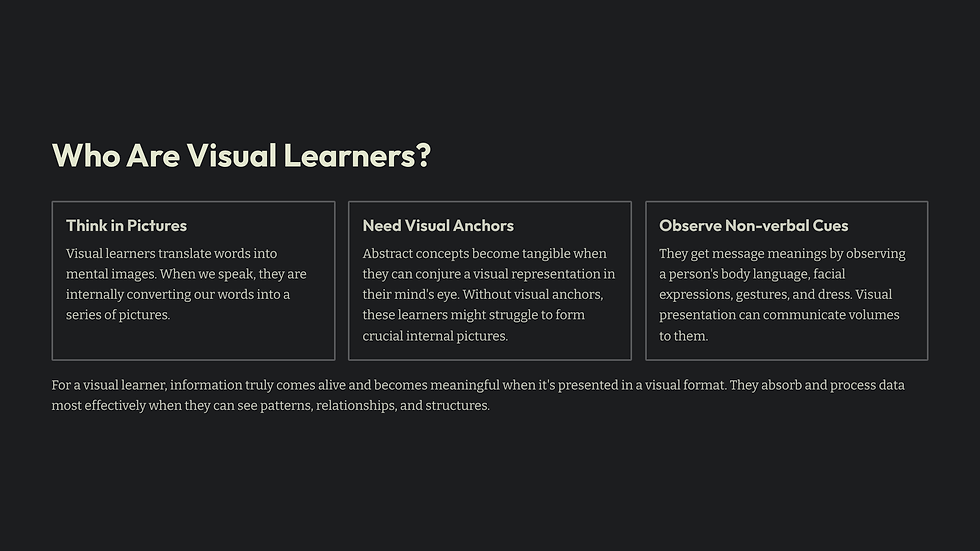


2. The Power of Sound: Engaging the Auditory Learner
This focuses on techniques for people who learn best by hearing, like using clear verbal explanations, group discussions, and storytelling.
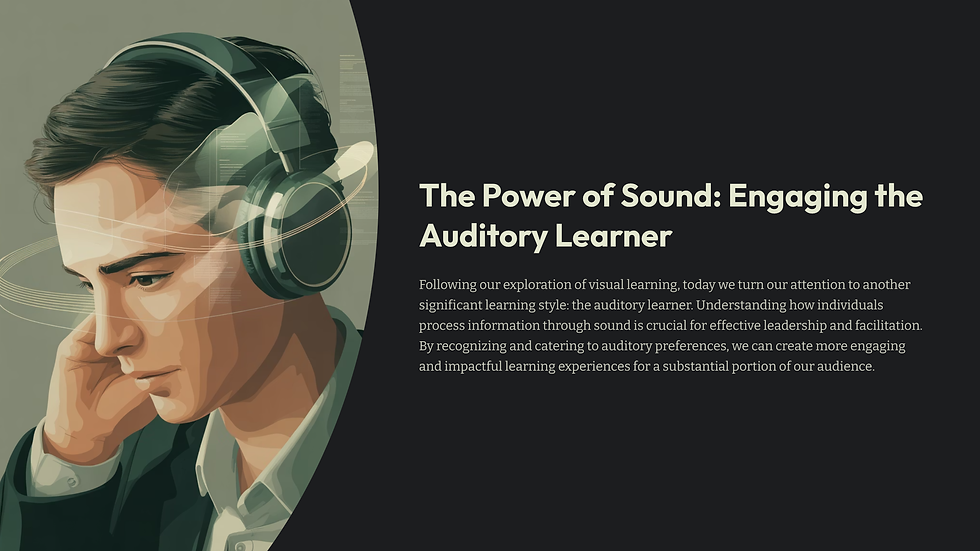
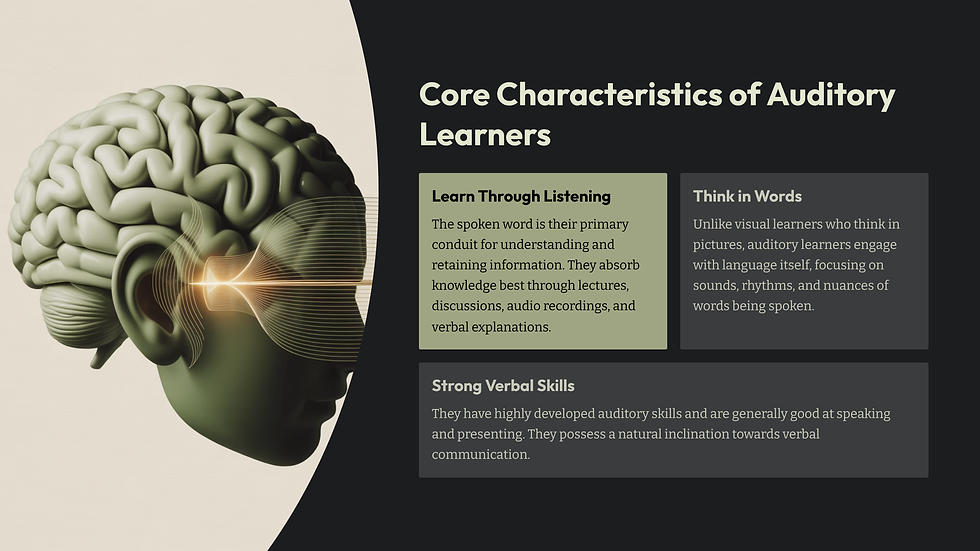
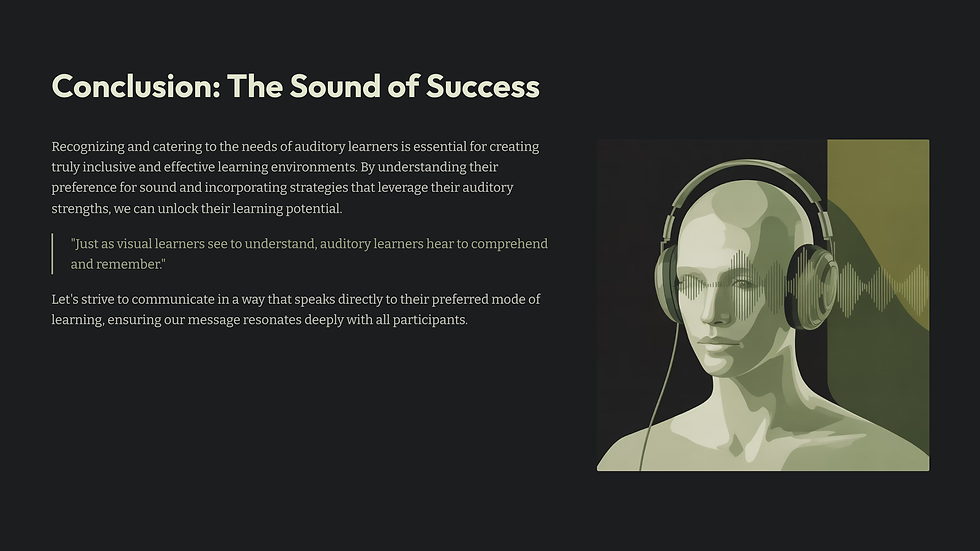

3. Learning by Doing: Engaging the Kinesthetic Learner
This explains how to appeal to learners who need to be hands-on, through activities, role-playing, and physical exercises.
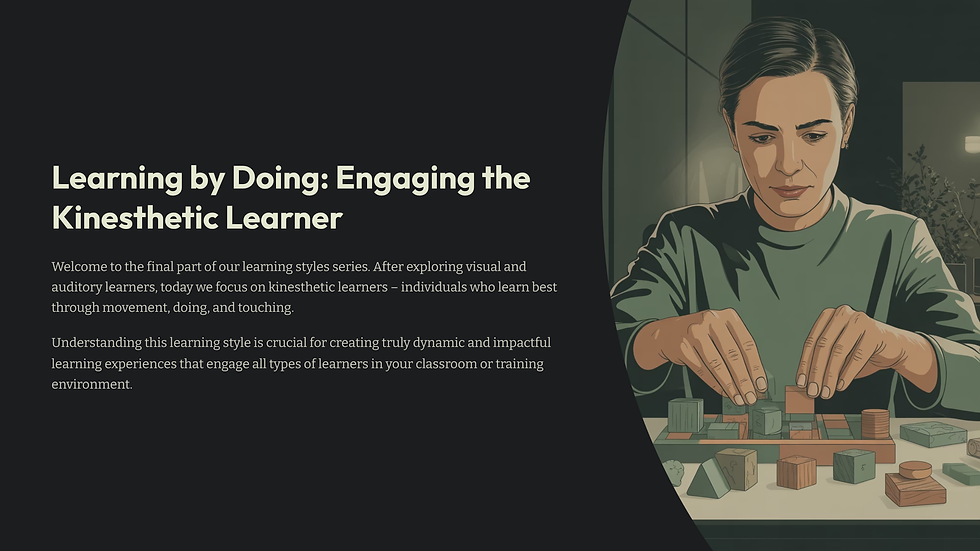



Adult Learning Theories
This topic explores the foundational theories that explain how adults learn differently from children. Understanding these principles is crucial for designing training that is relevant, respectful, and effective for a professional audience.
1. Adult Learning - Part 1
This provides an overview of foundational theories like Andragogy, focusing on core principles such as self-concept, experience, and readiness to learn.




2. Adult Learning - Part 2
This delves into additional theories and models, exploring how they can be applied to practical training scenarios to maximize retention and engagement.
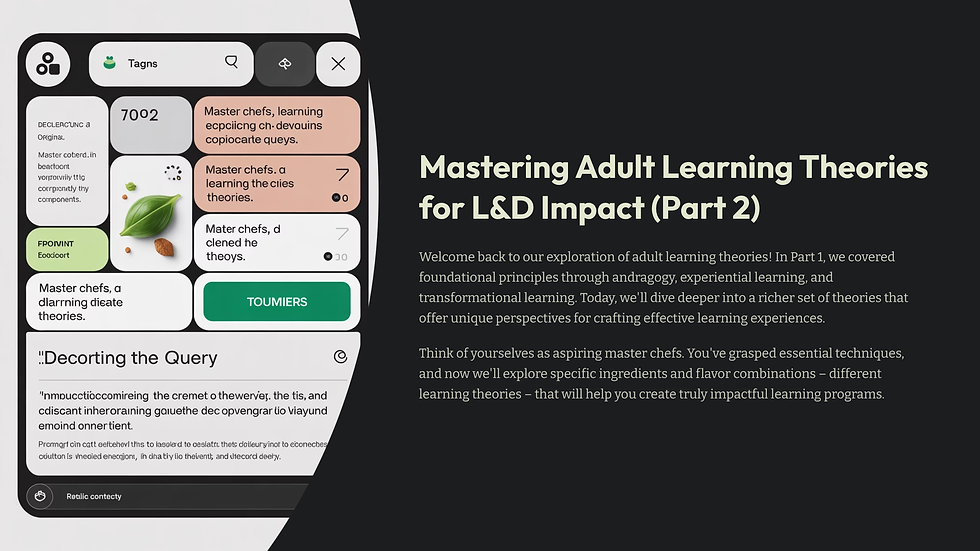
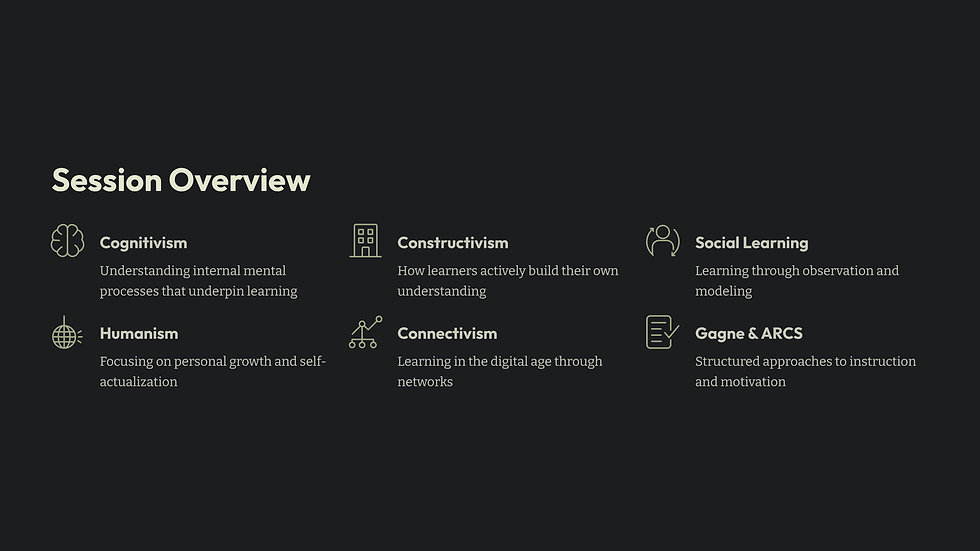


Environment, Content, & Objective
This section ties together the critical components of any successful training program. It provides a framework for ensuring that the learning objectives are clear, the content is relevant, and the training environment supports the learning goals.
1. Training Objectives
This defines how to write clear, concise, and measurable goals for any training session.

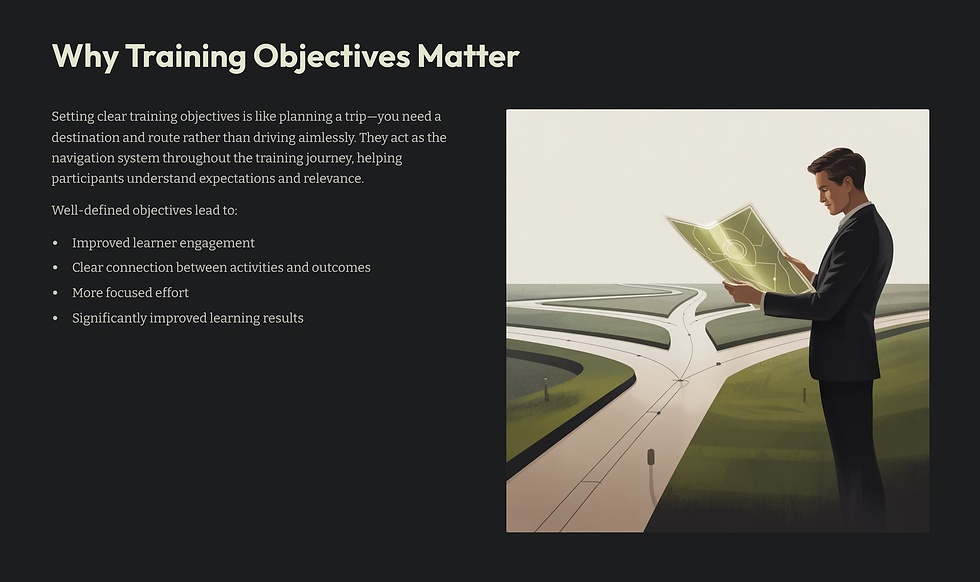


2. Training Environment
This explains how to set up the physical or digital space to be conducive to active learning and participation.




3. Training Content
This covers the process of curating, organizing, and delivering information that is both relevant and easy for learners to understand and apply.
